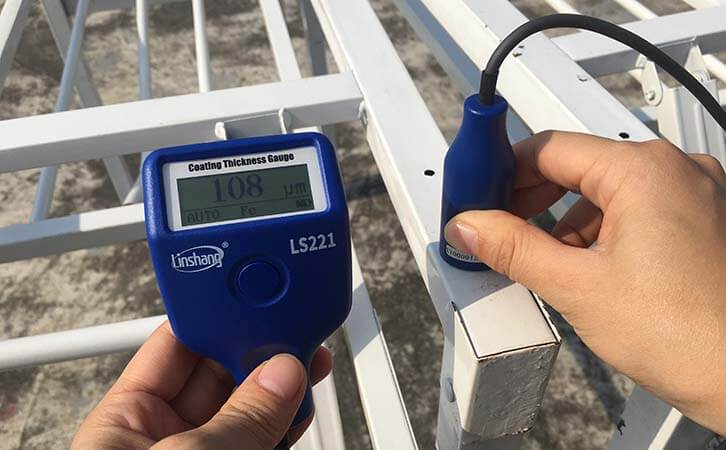Coating Thickness Measurement-Coating Thickness Gauge
In our daily lives, these clever scientific applications often play a vital role in some small details we haven't found. Such as coating process. In simple terms, the coating process is a special process to form a uniform covering layer on the object surface, which is used to play a very functional role such as fire protection, waterproofing, decoration and so on. This "emerging" craft, which originated in the 1980s, has achieved important results and world-wide attention once it was published. And in our lives, there are more and more applications.
The simplest is the use of some fireproof and waterproof coatings. On the surface of some objects that need to be protected, a special protective coating that is carefully prepared is brushed and then subjected to some special treatments. A uniform and dense protective film will be formed on the object surface, which effectively protects the internal materials from weathering and corrosion. The most typical is the fire protection of the wooden buildings in the Forbidden City. The effect of fire protection and erosion prevention is achieved by applying a flame retardant layer.
In the optical field, the application of the coating process is even more extensive. By virtue of the principle of light interference, refraction and reflection, when light passes through the upper and lower layers of the lens, refraction and reflection will occur. At the same time, because light of the same wavelength overlaps with each other, interference will occur-some areas will be strengthened, some areas will be weakened. Through this principle, it is possible to artificially adjust the thickness of the the lens to reduce the harmful light, such as "blue light" which is harmful to human eyes. Of course, there are many applications such as gold plating process and electrolysis of conductors.
Mentioned here brings back a new question. With such fine craftsmanship and manufacturing methods, the coating thickness should be controlled very finely. How can this be done? There is no doubt that it is time for the "coating thickness gauge" to show its strength.
The dry film thickness gauge is mainly applied to glass, ceramics, metals, etc. The coating thickness will directly affect the product quality or products that require deep processing. According to the different principles used, the dry film thickness gauge can be mainly divided into electron energy spectroscopy (AES), thin film analysis, X-ray fluorescence analysis, magnetic induction analysis, ultrasonic analysis and measurement methods. In actual industry and life, it is necessary to select an appropriate coating measurement method from the aspects of whether it accepts destructiveness, the characteristics of the material itself and the accuracy of the measurement according to the actual situation.
The small changes in the coating have changed the understanding and thinking of human beings and the refraction of social and scientific progress, but the pursuit of truth and material essence by scientists for thousands of years stay the same. We believe that in more areas in the future, the coating process will show a brighter future!
- High precision coating thickness gauge for used car
- Automotive paint protection films coating thickness gauge
- Plating Thickness Measuring Instrument for Detecting Anti-corrosion Coating
- Linshang LS220, LS191, LS160A– Necessary for Car Cover Inspection
- Coating Thickness Gauge for Second Hand Vehicle
- Zero Adjustment Step of Coating Thickness Gauge
